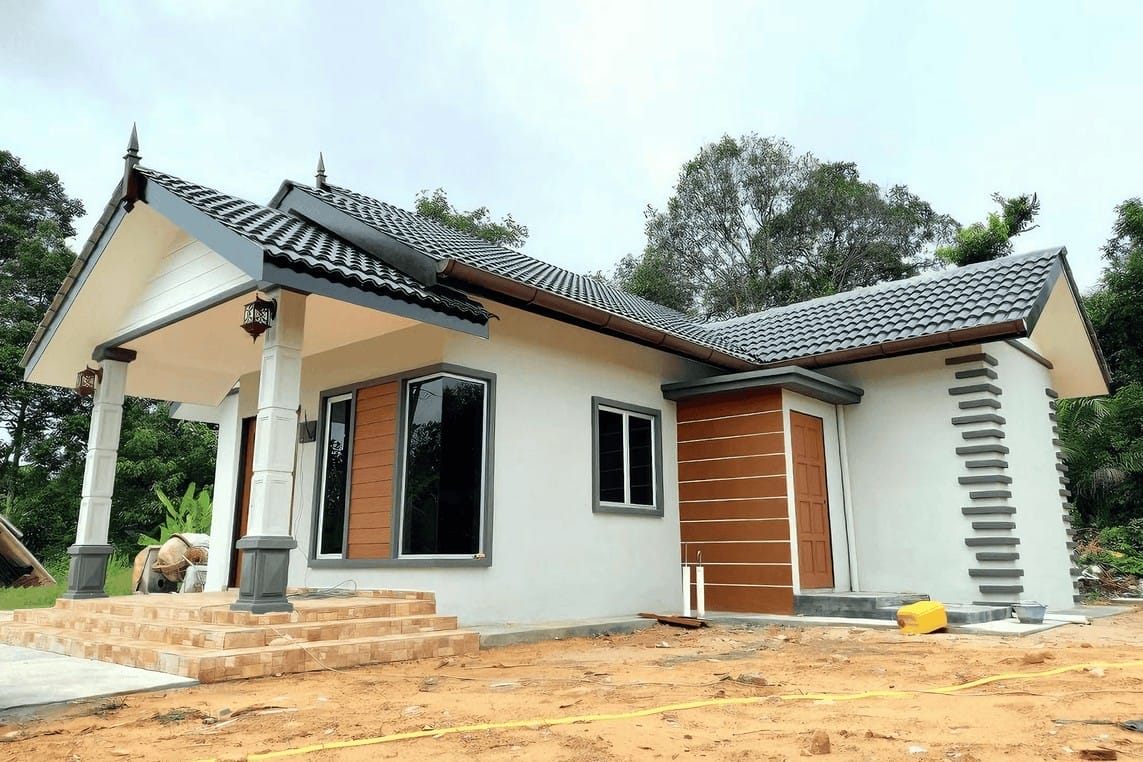Building your dream home is a journey paved with excitement, creativity, and, inevitably, financial considerations. As you embark on this transformative adventure, understanding the nuances of home construction financing becomes essential. Whether you envision a cozy cottage, a modern masterpiece, or a sprawling estate, the pathway to turning blueprints into reality often hinges on securing the right financial support. In today’s dynamic economic landscape, where interest rates fluctuate and lending options multiply, deciphering the best strategies for funding your project can feel daunting. This article seeks to demystify the process of obtaining financing for home construction, offering invaluable insights into various loan types, eligibility criteria, and smart budgeting techniques. By equipping you with the knowledge needed to navigate this critical phase, we aim to empower you to move forward with confidence and clarity, ensuring that your dream home becomes a tangible reality rather than a distant aspiration. Join us as we explore the essential steps in securing the financial backing you need to build the home you’ve always desired.
Understanding Your Financing Options for Home Construction
When it comes to financing your home construction, understanding the various types of loans available to you is crucial. Among the most popular options are construction loans, which are short-term loans specifically designed to cover the costs of building your new home. These loans typically convert into a permanent mortgage once the construction is complete. Borrowers should be aware that these loans may require plans, specifications, and a detailed timeline for the construction, ensuring lenders feel confident in their investment.
Another financing avenue is the FHA construction loan, which is preferred for those with lower credit scores or limited down payment resources. This government-backed option offers more flexibility in terms of qualification criteria while maintaining lower down payment requirements. Prospective homeowners should also explore bridging loans, which can facilitate the transition from an existing home to a new construction by providing immediate funds to cover the gap.
Additionally, homeowners often overlook the possibility of utilizing personal loans or home equity lines of credit (HELOC). These non-conventional financing methods can be advantageous, especially if you already own property with adequate equity. Below is a comparative overview of these options:
| Loan Type | Purpose | Best For |
|---|---|---|
| Construction Loans | Costs during home building | Building a new home |
| FHA Construction Loan | Building with lower credit scores | First-time homebuyers |
| Bridging Loans | Transitioning between homes | Those with existing homes |
| Personal Loans | Various expenses | Flexibility for small costs |
| HELOC | Accessing equity in your home | Homeowners with existing equity |

Preparing Your Financial Profile for Construction Loans
When gearing up for a construction loan, it’s essential to assemble a comprehensive financial profile that showcases your ability to repay the loan while demonstrating your investment in the project. Lenders will evaluate key financial indicators before making a decision, which means that your profile should highlight your income, savings, and existing debts. Below are some critical elements to consider:
- Income Verification: Provide documentation for all sources of income, including pay stubs, tax returns, and bank statements.
- Credit Score: Check your credit score and rectify any inaccuracies. A higher score generally translates to better loan terms.
- Debt-to-Income Ratio: Ensure that your existing debt obligations are manageable in relation to your income.
In addition to outlining your financial stability, showcasing your planning and budgeting capabilities can significantly enhance your appeal to lenders. Having a well-thought-out construction budget is crucial. Consider presenting a table that summarizes your construction cost estimates alongside expected expenses:
| Expense Type | Estimated Cost |
|---|---|
| Land Purchase | $50,000 |
| Building Materials | $75,000 |
| Labor Costs | $40,000 |
| Permits and Fees | $5,000 |
A well-prepared financial profile not only boosts your chances of obtaining a construction loan but also aids you in managing your budget effectively throughout the building process. Don’t forget to include evidence of any existing asset values, including real estate, to further substantiate your financial standing. This holistic view of your finances shows lenders that you are a serious and capable borrower, committed to seeing your home construction through to completion.

Navigating the Application Process with Confidence
Embarking on a journey to secure financing for your home construction can feel daunting, but with the right approach and mindset, you can navigate this process with ease. Start by gathering all essential documents, such as your credit report, proof of income, and any additional information that lenders may require. Familiarize yourself with various financing options, including conventional loans, FHA loans, and construction-to-permanent loans. Understanding the pros and cons of each choice can empower you to make informed decisions.
Creating a budget is another vital step in this process. Outline your construction costs, including materials, labor, permits, and any unexpected expenses. A comprehensive budget will not only clarify finances but also demonstrate to lenders that you are prepared and serious about your project. Consider using a table to break down and visualize your costs:
| Expense Type | Estimated Cost |
|---|---|
| Materials | $15,000 |
| Labor | $20,000 |
| Permits | $3,500 |
| Contingency Fund | $5,000 |
As you prepare your application, be proactive in addressing potential concerns about your credit score or financial history. Acknowledge any issues upfront and provide context if necessary. Seek pre-approval whenever possible, which will clarify how much you can borrow and simplify the final approval process. Keep communication open with your lender throughout this journey. By engaging in honest discussions and asking questions, you’ll reduce anxiety and build a solid foundation for a successful financing experience.

Tips for Securing the Best Interest Rates and Terms
To navigate the complex world of home financing, it’s essential to conduct thorough research. Start by comparing offers from multiple lenders. Take into consideration not only the interest rates but also the terms and additional fees involved. A simple online search for lenders in your area, coupled with a review of their customer feedback, can provide valuable insights. Utilize mortgage calculators to simulate different scenarios and understand how varying rates will impact your monthly payments and the total cost over the life of the loan.
Furthermore, enhancing your credit score before applying for financing can significantly influence the rates you are offered. A score above 700 often garners better terms. Consider paying down existing debts and correcting any errors on your credit report to give your application a competitive edge. In addition, having a stable source of income and a manageable debt-to-income ratio will reassure lenders of your ability to repay the loan, making them more willing to offer favorable conditions.
Lastly, don’t overlook the importance of timing. Interest rates fluctuate based on economic conditions. Keeping an eye on market trends can help you identify the right moment to apply. Additionally, if you qualify, look into special financing programs, such as those offered by government agencies, which can provide competitive rates and flexible repayment options. Below is a brief overview of potential loan types to consider:
| Loan Type | Features |
|---|---|
| Conventional Loans | Fixed or adjustable rates, standard terms, and PMI required if down payment < 20%. |
| FHA Loans | Low down payment, flexible credit score requirements, government backing. |
| VA Loans | No down payment, no PMI, and competitive interest rates for veterans. |
Q&A
Q&A: How to Get Financing for Your Home Construction
Q: What are the first steps I should take when considering financing for my home construction?
A: The journey to financing your home construction begins with a solid plan. First, establish a budget that accounts for land, materials, labor, permits, and unforeseen expenses. Next, consult with builders to get an estimate of construction costs. This lays a foundation for your financing needs.
Q: What types of financing options are available for home construction?
A: There are several financing options to explore:
- Construction Loans: These are short-term loans that cover the cost of construction, converting to a mortgage once the home is completed.
- Home Equity Loans: If you’re a property owner, you can tap into your home’s equity to fund the project.
- Personal Loans: An option for those who may not have significant assets; however, interest rates can be higher.
- FHA Construction Loans: These government-insured loans are ideal for low to moderate-income buyers who meet specific criteria.
Q: How do I choose the right financing option for my needs?
A: Consider factors like your credit score, debt-to-income ratio, and the amount you need to borrow. Breaking down each option—its terms, interest rates, and fees—will help determine which aligns best with your financial situation and construction timeline. Engaging with a financial advisor can provide clarity.
Q: Is a down payment necessary for construction financing?
A: Typically, yes. Most lenders require a down payment, which can range from 3% to 20% of the total loan amount, depending on the type of loan. The larger the down payment, the more favorable your loan terms might be.
Q: What should I prepare before applying for financing?
A: Lenders will want to see a complete picture of your financial health. Gather documents such as:
- Proof of income (like pay stubs and tax returns)
- Details of your assets and debts
- Project plans, blueprints, and a budget
- A list of potential contractors and their estimates
Q: How long does the financing process typically take?
A: The financing process can vary widely but usually takes anywhere from a few weeks to a few months. Factors include the type of loan, the lender’s evaluation process, and how quickly you can provide necessary documentation. Patience is key; ensure all details are accurate for a smoother experience.
Q: What are some potential pitfalls to avoid when seeking financing?
A: Beware of these common pitfalls:
- Underestimating your budget, which could lead to project delays or additional financing needs.
- Ignoring the fine print on loan agreements, as hidden fees can add up.
- Failing to maintain good credit through the application process, as changes can affect loan terms.
- Not shopping around for the best loan rates and terms—comparison shopping is essential for making an informed decision.
Q: Can I make changes to my construction plans after securing financing?
A: While it’s possible to make changes, it’s crucial to understand how they might affect your financing. Major modifications can require additional funding, adjustments to loan terms, or a re-evaluation by the lender. Always communicate with your lender before making significant changes.
Q: What’s the best advice for someone looking to finance home construction?
A: Do your research and remain organized! Understand the full scope of your project, keep your finances in order, and don’t hesitate to seek professional advice. Transparency with your lender and contractors can lead to a more successful financing journey and, ultimately, your dream home.
In Summary
As you embark on the exciting journey of building your dream home, navigating the world of financing might seem daunting, but it doesn’t have to be. With the insights and strategies outlined in this article, you’re now equipped to approach lenders with confidence, making informed decisions along the way. Remember, every project starts with a solid foundation—financially and architecturally.
Embrace the process, communicate openly with your chosen financial institutions, and don’t hesitate to seek advice from experts. With a clear plan and the right support, your vision can transform into reality, one brick at a time. As you lay the groundwork for your new home, know that the effort you put into securing the right financing will pay off for years to come. So, gather your blueprints and step boldly into this new chapter; your future home awaits!


